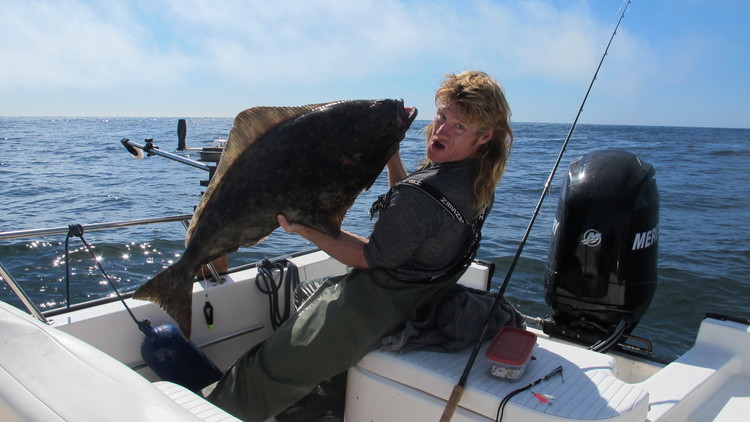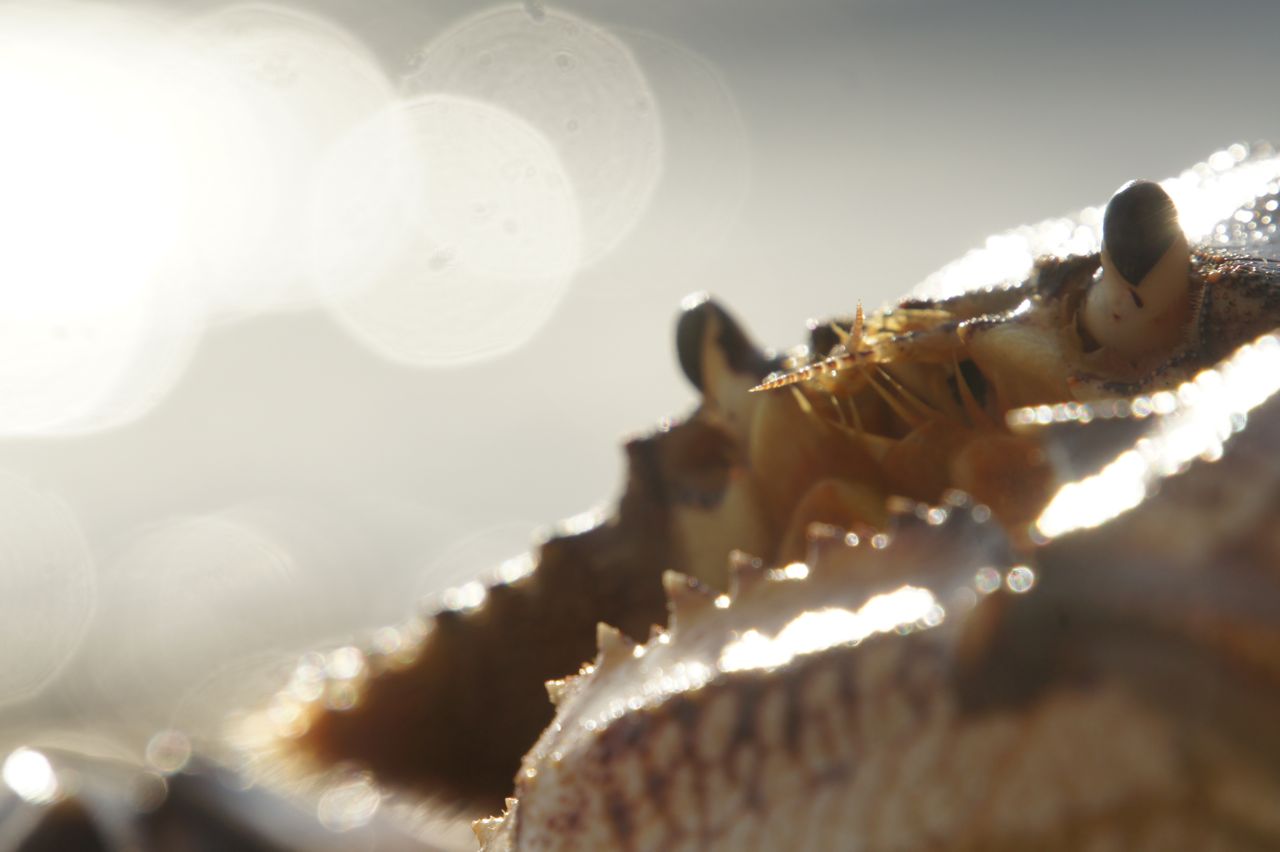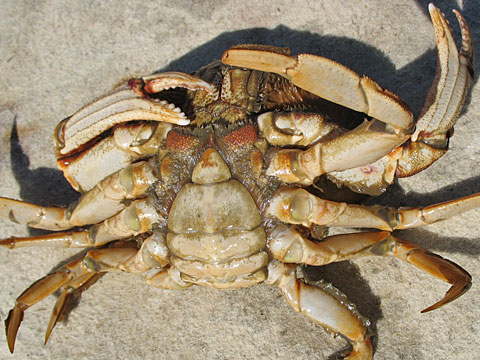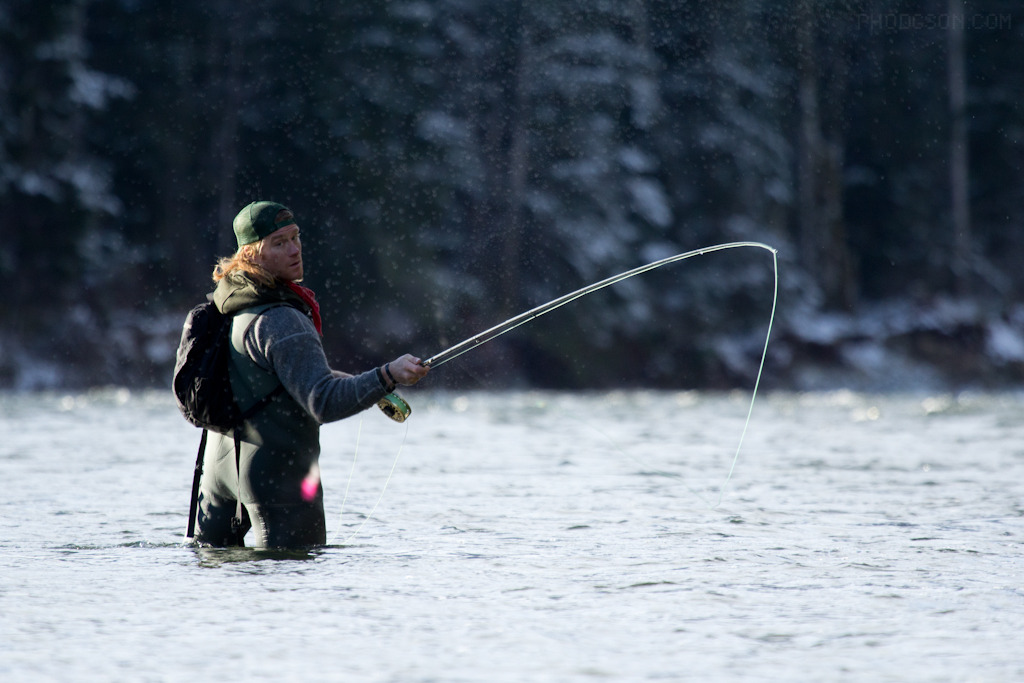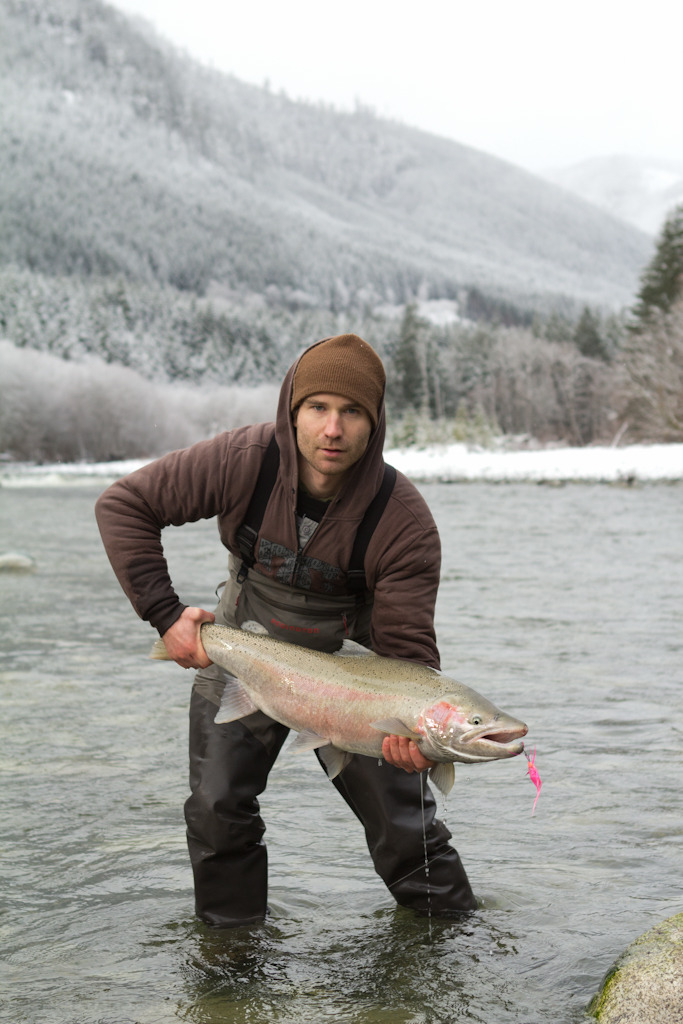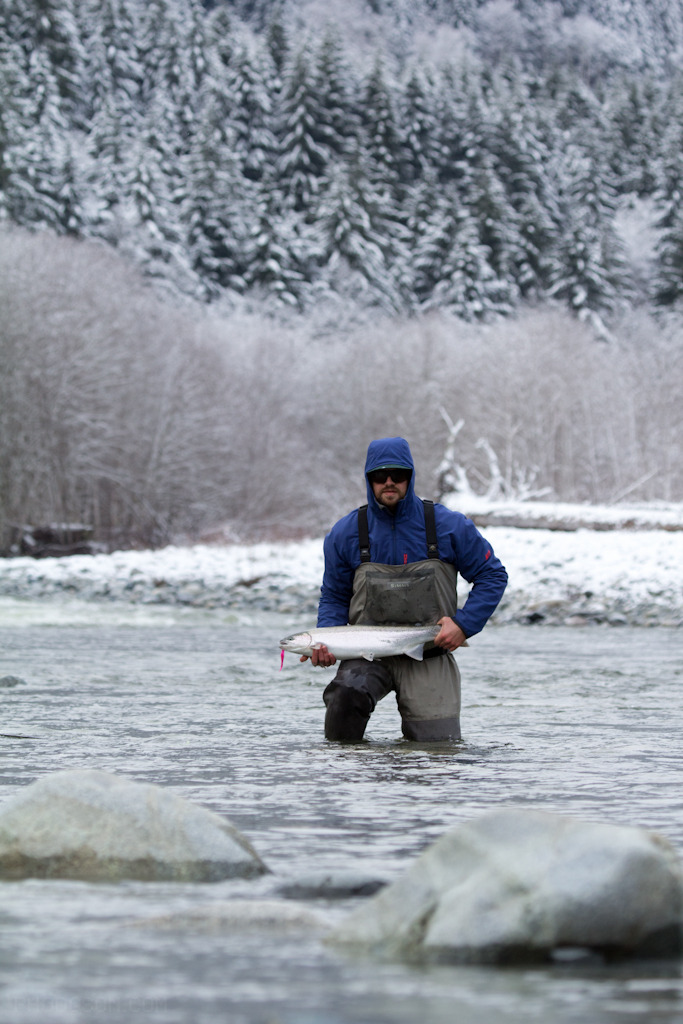A fine reward.
The seas were rough and I had the flu. My son was two weeks old and sleep had become a distant memory. We were on our annual family fishing trip to the west coast of Vancouver Island. Two of my friends and their girlfriends had decided to join my stepfather and I for some offshore fishing. We were targeting salmon and Halibut.
We were four days into our trip and the fishing had been slow, very slow. I was beginning to feel pretty stupid for assuring my friends that they were guaranteed the best fishing of their lives and that it was totally worth the two ferry rides, the six-hour drive, the accommodations and the expenses that would follow each. The trip would pay for itself in fish I assured them and they would walk away with an experience never to be forgotten. Well where I missed the mark on the former I definitely hit on the latter.
Regardless of the fact that this year was an exceptionally poor year for fishing we still managed to hook and land some Coho and Chinook-enough for a few meals anyways. The problem was we had not hooked a single halibut. So I made the call: “tomorrow we are going to catch a halibut if it’s the last thing we do” and it almost was.
I awoke during the wee hours of the morning with the sense of determination that can propel people to achieve the unachievable. I was going to save the trip by steering us fourteen miles off shore to a bank that I had spotted on the charts and had given me a good feeling the previous day. I rubbed the sleep out of my eyes and clothed myself with the appropriate rain gear. After slipping on my gumboots, I realized that I was sweating and my whole body ached. My wife and baby boy were still sleeping when I left to make my way down to the dock where our boat was tied up.
It took me seven trips to make it to the boat. Each time I tried to leave our rental cabin I was hit with that familiar sense of panic you get right before you drop an uncontrollable and unwanted number two in your under clothing’s. After my fifth return to the cabin my wife caught on to my situation. “You feeling alright honey” she queried. “I’m fine,” I said with disregard from the washroom. “Maybe you should stay home today, I think you have the flu,” she suggested. “Nope, I’m fine just a little upset stomach, that’s all, it’ll pass.” Finally I was able to make my way down to the boat where my stepfather, two friends and their girlfriends anxiously awaited me. “Are you feeling alright, you look horrible.” I wiped the excess sweat off my forehead and proclaimed “I’m fine, lets go, you guys are in for a treat today, we are heading to my lucky spot!”
Well about a fifth of the way to my “lucky spot” a wave nausea came over me as a wave of salt water came over the bow. The weather had taken a turn for the worst and so had my guts.
Most people can relate with having the flu and a fair few I am sure have experienced sea sickness but to experience them both at the same time-well, now let me tell you that the only thing worse is to have an audience witnessing your experience on a 21 foot open-decked boat with no privacy and nowhere to go.
Author chumming the water.
Author chumming the water again.
When we finally arrived at our destination I was greener than Kermit the frog. The seas were angry but my guts were angrier. We idled down and killed the engines right over a pinnacle on the ocean floor. I was doing everything in my power to not submit to the tsunami of nausea falling down upon me. I glanced over at the rest of the crew and noticed that one of my friends was looking a little green as well. This made me feel better-it’s always nice to know that you are not alone in your suffering.
Still determined I set up my halibut rig and sent her to the bottom. I was using a spreader bar with a two-pound weight and salmon bellies for bait. The rest of the crew followed suit. Talking seemed not worth the effort and I braced myself against the railings for the heavy rollers and stared at the tip of my rod with everything I had left. Excess drool started pooling in the back of my mouth and something dropped in my guts. At this moment something 150 feet below the surface of the water made it’s way towards my rig with a hungry appetite.
I looked up and noticed that everyone seemed to be watching me like I was in some sort of exhibit in the zoo. They seemed to know exactly what was going to happen and were cautiously curious to see it unfold. I on the other hand was refusing to surrender, determined to save this fishing trip with some exceptional halibut fishing.
Suddenly my rod bent in half. I grabbed it and gave a vicious yank to set the hook. “GOT ONE” I proclaimed with a tremendous sense of victory. I could feel some good weight and knew that it was a descent-sized fish.
Now that I had secured the spot light with this rod bending action my guts decided that they had had enough and that the party was over. Projectile vomit shot from my yap like flames would the jowls of an angry dragon. Doubled over in a fire breathing fashion, I charffed my guts out over the side of the boat and with the kind of focus only possessed by Olympic athletes managed to keep my rod tip up.
Horrified, the ladies in the bow turned away. This was all the catalyst my green friend needed to send him over the edge as well. With both of us now chumming the water with last night’s dinner, I began to have my doubts about getting this fish to the boat. We both took refuge in the others sufferings. When it was my turn he would laugh at me and poke fun and when it was his turn, Id return the favor. Finally the assault subsided long enough for me to get a few turns in on the reel. I wiped my mouth and held on firm, regaining my focus and a bit of confidence.
As I slowly gained line on this beast from below, the violence shifted from one end of me to the other. I knew my time was marked by only seconds before I left a mess in my rain pants that could never be washed clean. I threw my rod at my step-dad and struggled to undress in frenzy. As I scrambled my way onto the swim-grid I announced that things were about to get ugly and told the spectators to remain facing the bow. I’d like to say that I got my gear off in time but I would be lying-a little. On the whole I did a pretty good job of keeping the mess on the outside and as I chummed the water with the remainder of last nights meal I saw a nice big halibut being pulled to the surface like a sheet of plywood. It looked like a good 50 pounder-not a giant but big enough to secure a few meals for the winter to come.
Suddenly, springing back to life I wrestled my rod away from my step-dad and instructed him to get the gaff. The girls in the bow were too scared to even open their eyes, let alone lend a hand. I thought I heard one of them crying. So it was up to the men to get the job done.
I cranked on the reel and heaved on the rod; the beast broke the surface and made a charge back down with reel screaming power. I wondered who was more tired, more worn down and began to doubt my strength. I took a deep breath and worked this halibut back up through the water column with the remainder of my strength.
Finally when it was within arms reach, my step-dad fired a well-placed gaff into the fish and heaved it aboard. Excitement ensued and so did a few more trips to the swim grid.
A monster Halibut and an under the weather angler.
As the day progressed the weather calmed down and the seas leveled out. We would each go on to catch our limit of halibut from my “lucky spot” but none would yield the fight that I endured with my guts that day. Was it worth it you might ask? For the story alone, I would have to say yes. Will any of the crew go fishing offshore with me again? Probably not.
Until next time, keep that rod tip up,
-Captain Quinn

